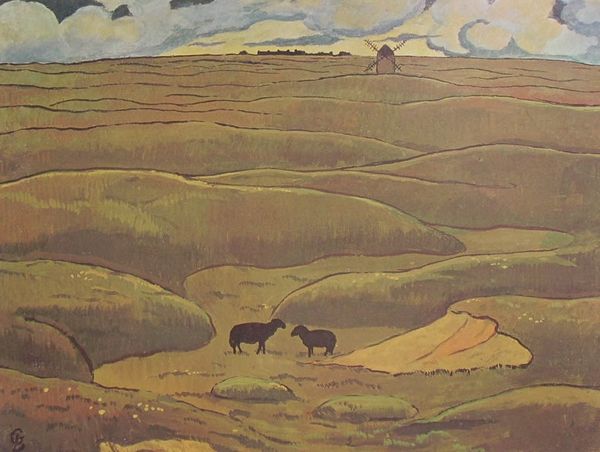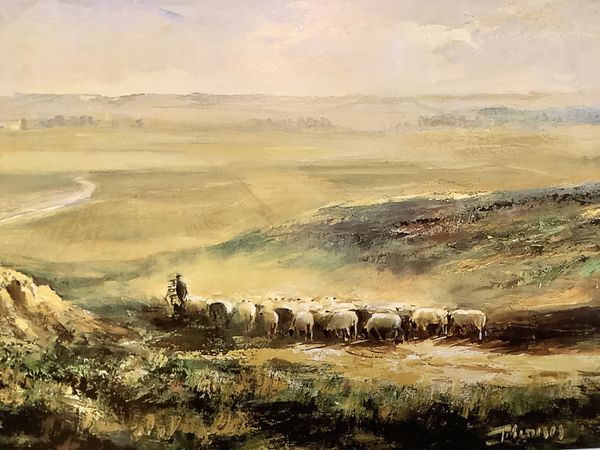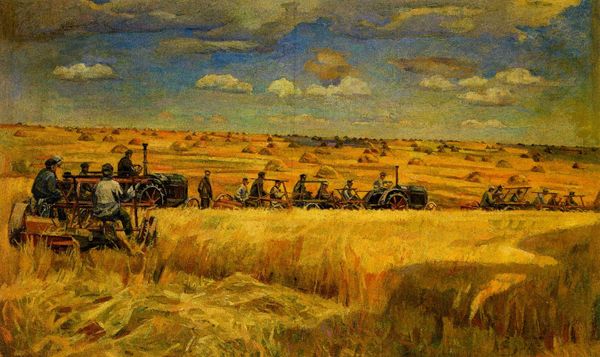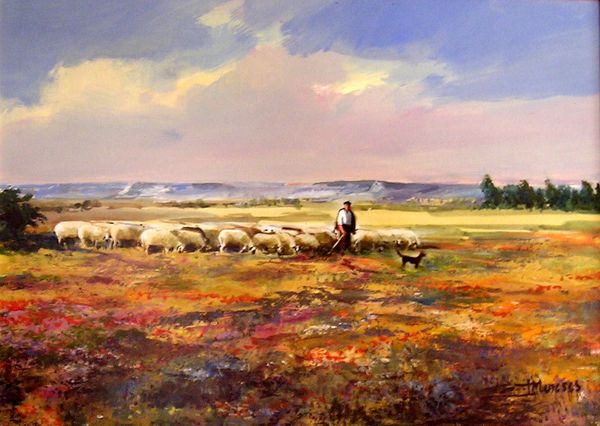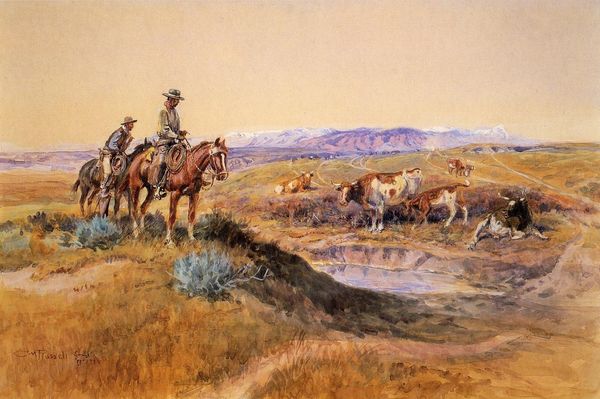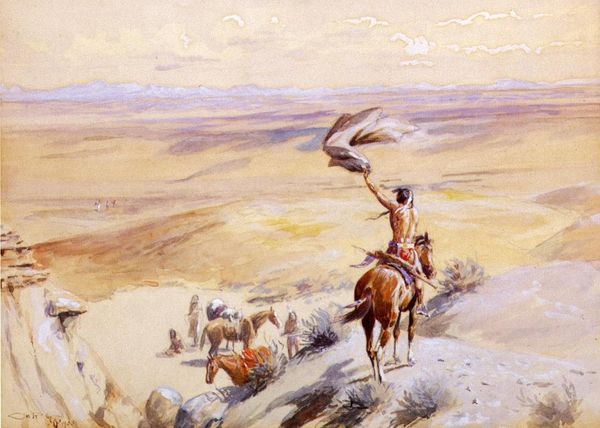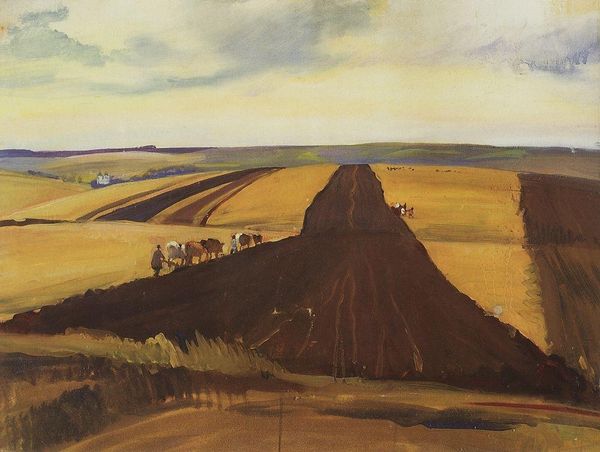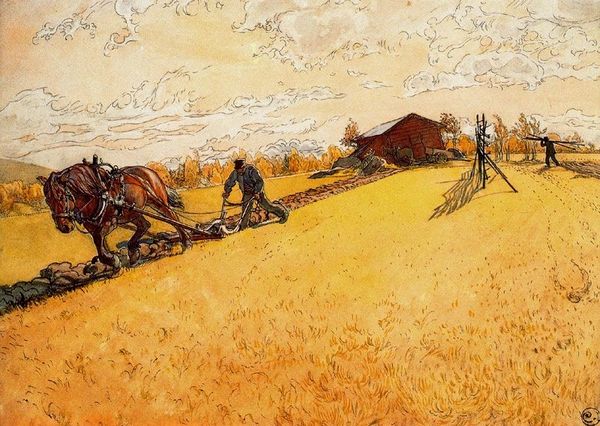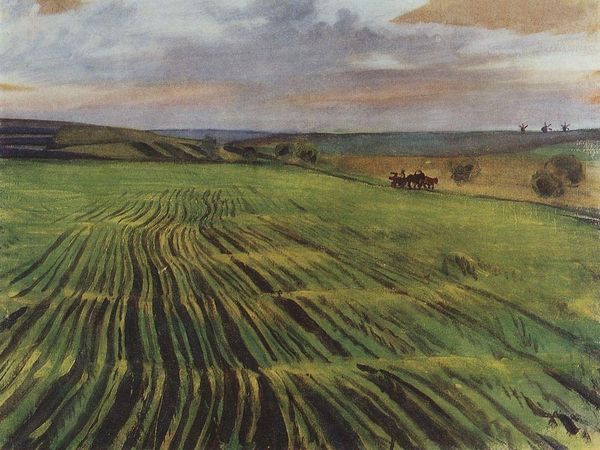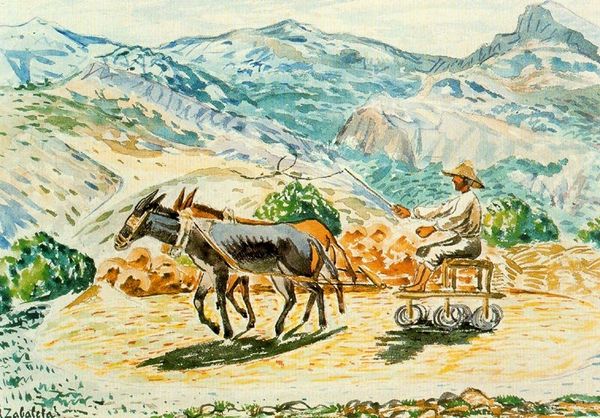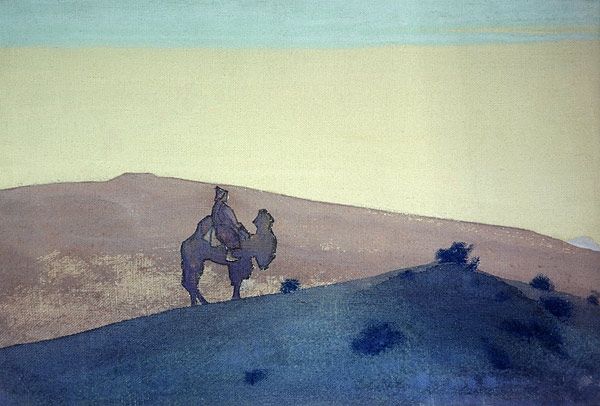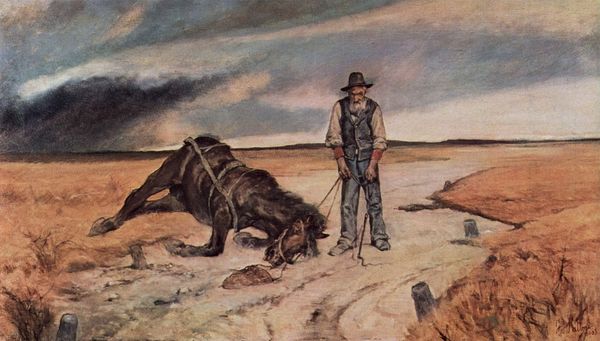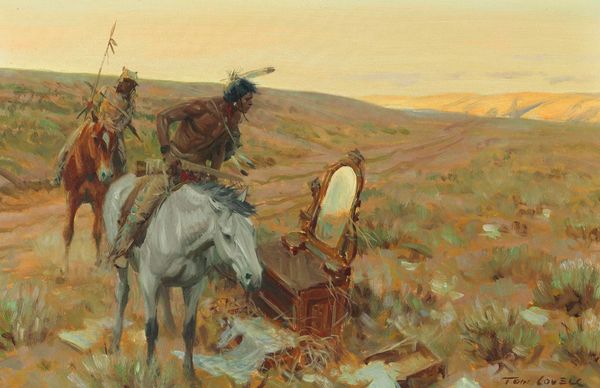
Dimensions: 30.48 x 45.72 cm
Copyright: Public domain
Curator: Sargent's "Hills of Galilee," created around 1906, strikes me as remarkably subdued. It’s so muted, the colours nearly blend into one another. A haze seems to hang over everything. Editor: It's the hazy quality, I think, that gives this watercolor such power. Notice how Sargent layers washes of colour. The ochres and browns of the landscape are built up with delicate strokes, creating depth and texture. The entire work seems very much process-driven. You can imagine Sargent standing there en plein air, rapidly capturing the light and atmosphere. Consider the sheer labor involved for such a fleeting impression. Curator: True, you can feel the artist’s hand in the hurried brushwork. But for me, it is also the composition itself—how the rolling hills are framed by the stark foreground. There's something inherently calming in how the horizon is laid out—it creates this open vista to something new, somewhere peaceful. The light reflects and diffuses; it becomes its own kind of presence, almost, that shapes everything. Editor: That presence also signifies manual labor—plowing the soil with animal power. These muted colours might reflect the realities of a challenging rural existence in the early 20th century. There's a certain grit in this apparent simplicity that is palpable. I imagine it isn't as simple as observing a scene. It requires resources and a certain level of access to then reflect that in an art piece. Curator: Do you think this simplicity perhaps elevates the ordinary? There are no bold gestures, yet somehow the emotional weight resonates. Consider the semiotics of colour, of light, as forms, signs of potential new readings. Editor: Precisely. It challenges notions of artistic genius. Sargent may have been celebrated, but here he seems to be focusing on the workers in this landscape, on capturing a specific time and place, rather than simply showcasing his own skill. Curator: That makes this piece resonate—his perspective feels like a gift from then until now. Editor: And so much we still may interpret within it!
Comments
No comments
Be the first to comment and join the conversation on the ultimate creative platform.
